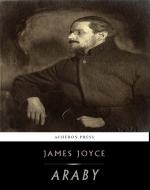|
This section contains 4,870 words (approx. 17 pages at 300 words per page) |

|
SOURCE: “Blind Streets and Seeing Horses: Araby's Dim Glass Revisited,” in Studies in Short Fiction, Vol. 32, No. 3, Summer, 1995, pp. 309–18.
In the following essay, Norris explores stylistic elements of “Araby,” particularly the narrative voice in the story.
Joyce's “Araby” not only draws attention to its conspicuous poetic language: it performatively offers the beauty of its art as compensation to the thematized frustrations of the story. The little boy whose heart is broken by a city “hostile to romance,” transmutes his grief into a romance of language. Joyce, whose Dubliners stories tend to bear rhetorical titles, makes of “Araby” a rhetorical bazaar that outstrips in poetic exoticism the extravagant promise of the empty and sterile commercial confection that so disappoints the child. In an early essay on Dubliners, Frank O'Connor writes of “Araby,” “This is using words as they had not been used before in English, except by Pater—not...
|
This section contains 4,870 words (approx. 17 pages at 300 words per page) |

|


